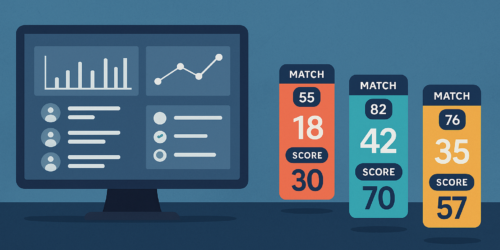What's in this article?
Predictive Lead Scoring is a transformative tool for modern sales organizations—but implementation isn’t without hurdles. From data quality to user trust, these five common challenges often make or break scoring success. This guide outlines each obstacle and provides actionable strategies to overcome them—ensuring your AI-driven scoring initiative delivers measurable business impact.
1. Data Quality Assurance
The Problem
Predictive scoring is only as accurate as the data behind it. Incomplete profiles, siloed databases, or outdated records weaken scoring integrity.
The Fix
Implement Rigorous Data Management Practices
- Conduct regular audits to detect and clean inconsistent data.
- Use AI-powered enrichment tools to autofill gaps and correct inaccuracies.
- Ensure data flows seamlessly across tools using real-time integrations (via API).
2. System Integration Barriers
The Problem
Many businesses struggle to embed predictive scoring into existing CRM systems, especially when working with outdated platforms or fragmented stacks.
The Fix
Select Integrated, Scalable Platforms
- Choose tools that natively integrate with CRMs like Salesforce, HubSpot, or Zoho.
- Use middleware (e.g., Zapier, MuleSoft) to bridge gaps in system communication.
3. Lack of Modeling Expertise
The Problem
Building accurate scoring models often requires data science capabilities beyond what many teams possess.
The Fix
Leverage Out-of-the-Box Models or Expert Partnerships
- Use vendor platforms (like ProPair) that provide pre-trained, customizable scoring templates.
- Partner with data consultants to tailor models for your vertical, audience, and deal cycles.
4. Keeping Models Fresh
The Problem
Market shifts, product changes, and buyer behavior evolution can quickly age your model.
The Fix
Create a Continuous Learning Pipeline
- Retrain models quarterly with updated data.
- Automate feedback loops from CRM and sales engagement platforms.
- Use ML frameworks that adapt over time without full redeployment.
5. Driving User Adoption
The Problem
Sales reps often distrust black-box scoring tools, especially if they don’t understand how leads are ranked.
The Fix
Build Confidence Through Transparency and Education
- Host workshops explaining model logic, accuracy metrics, and real-world benefits.
- Share success stories where predictive scores led to wins.
- Visualize predictions and outcomes in dashboards reps use daily.
FAQs
What is Predictive Lead Scoring?
It’s the process of assigning scores to leads based on their likelihood to convert using AI and data modeling.
Why is CRM integration important for scoring models?
Integrated CRMs ensure that real-time data improves scoring accuracy and enables timely, actionable insights.
What’s the main benefit of using predictive scoring?
Sales teams can focus their energy on high-converting leads, increasing both efficiency and ROI.
How do you keep scoring models relevant over time?
Update them with fresh data quarterly, or automate retraining processes where possible.
Can predictive scoring work for small teams or niche industries?
Yes—custom scoring models can be scaled to fit any team size or vertical.
Strategic Insight: Enhance Your Lead Scoring Framework
To unlock the full potential of predictive lead scoring, you must move beyond plug-and-play tools. Prioritize clean data, seamless integrations, and ongoing education to build trust and maximize performance. ProPair’s AI-driven platform empowers your team to align scoring precision with real sales outcomes.
👉 Explore ProPair’s Predictive Solutions
👉 Request a Demo
Related Reading



